Antiques Roadshow Guest Stunned As “Worthless” Brooch Fetches Unexpected Price
History abounds with stories of people coming across promising discoveries only to find they're worth far less than they were led to believe. Whether it's because they were duped into buying a forgery or they learned what "fool's gold" is the hard way, these disappointments teach others to be cautious about opportunities that seem too good to be true.
However, the opposite occurrence is also not unheard of. People can have a heirloom lying around that only remained in their family due to its sentimental value. But when they get to an appraiser through avenues like Antiques Roadshow, they're sometimes overwhelmed to discover that the item they've taken for granted is closer to "priceless" than "worthless."
The right expert
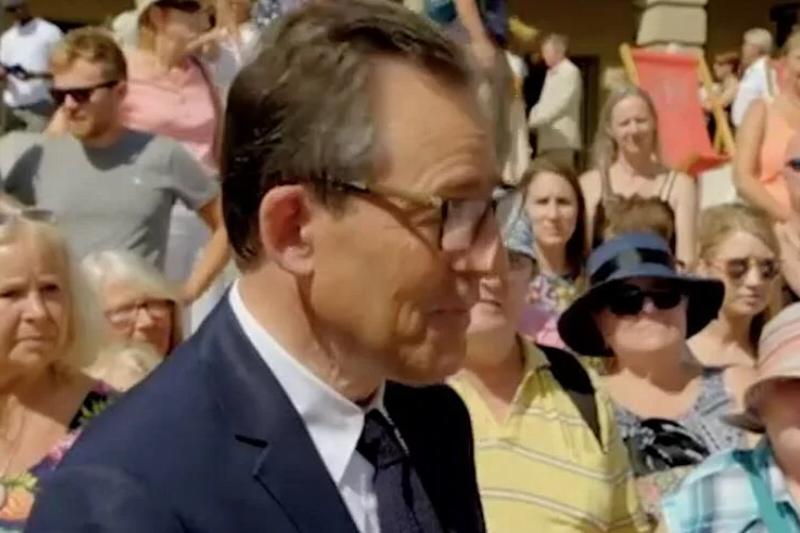
In early March 2019, Antiques Roadshow valuation expert John Benjamin showed some curiosity in one young woman's brooch. Although she had little reason to believe it was worth much, she figured that bringing it to his trained eye would give her the final word on its value.
According to the BBC, Benjamin left school at 17 to apprentice for an antique jewelry shop called Cameo Corner, and his expertise only expanded after he qualified as a Fellow of the Gemmological Association.
A longtime contributor

After his acceptance into the association, Benjamin went on to earn their Diamond Diploma and joined Philips Fine Art Auctioneers. After honing his expertise further, he went on to become the organization's Director of Jewelry before setting up his own valuation consultancy in 1999.
By the time he became independent, he had already lent his knowledgeable eye to Antiques Roadshow for eight years and continues to maintain a position among their roster of consultants. The item he remembers the most fondly was a worn-out Cartier watch that had been rescued from an old tobacco box in Ireland.
A "big blue blob"
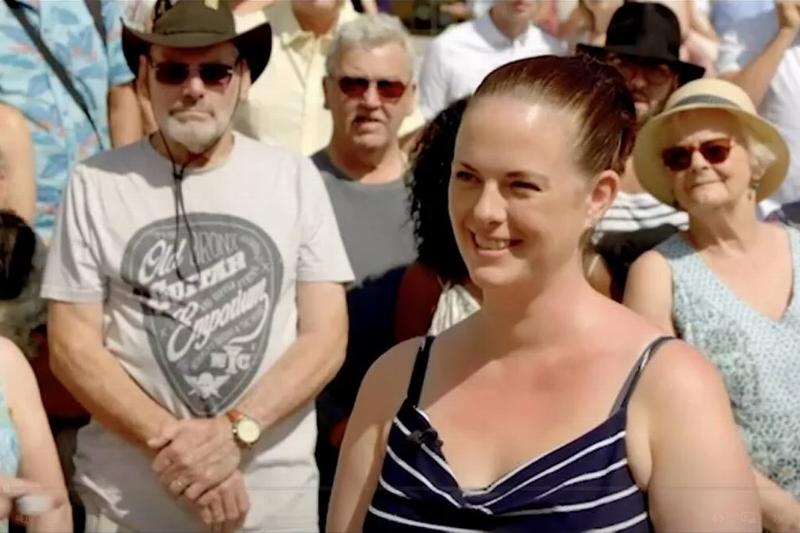
However, his analysis of one woman's brooch will likely mean as much to her as that Cartier watch meant to Benjamin. That's because the day she met him was the first time anyone had challenged the standard narrative about the item.
With a good-humored smile, she confirmed Benjamin's understanding that most people in her life have referred to it as "the big blue blob." And at first glance, that seemed to be an accurate way to describe it for him, too.
A dazzling sea of blue
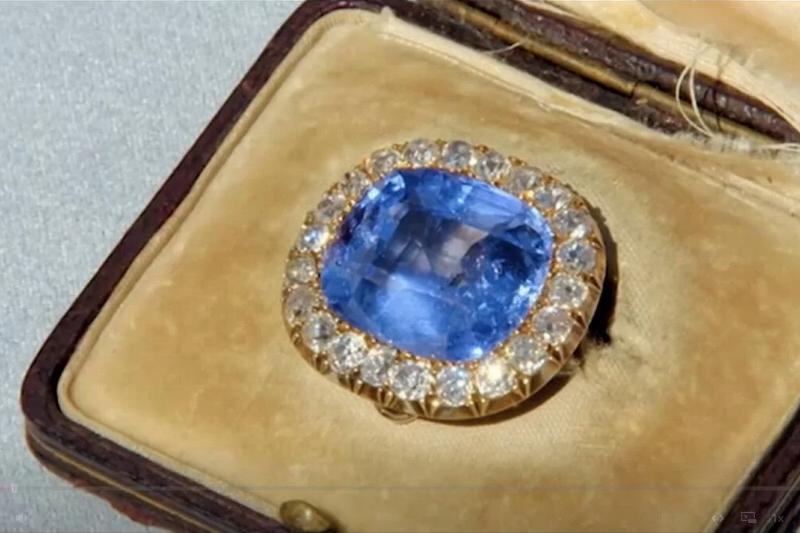
Indeed, the eye is immediately drawn to the center of the brooch, as the stone's massive blue frame even manages to distract from the ring of sparkling diamonds around it. However, the jewelers the woman showed it to couldn't agree that they were actually diamonds.
That confusion went double for the blue stone, and Benjamin mentioned that the woman struggled to get a straight answer about what the stone is even made from. But if there was one thing that united those jewelers, it was their lack of interest.
How it got here
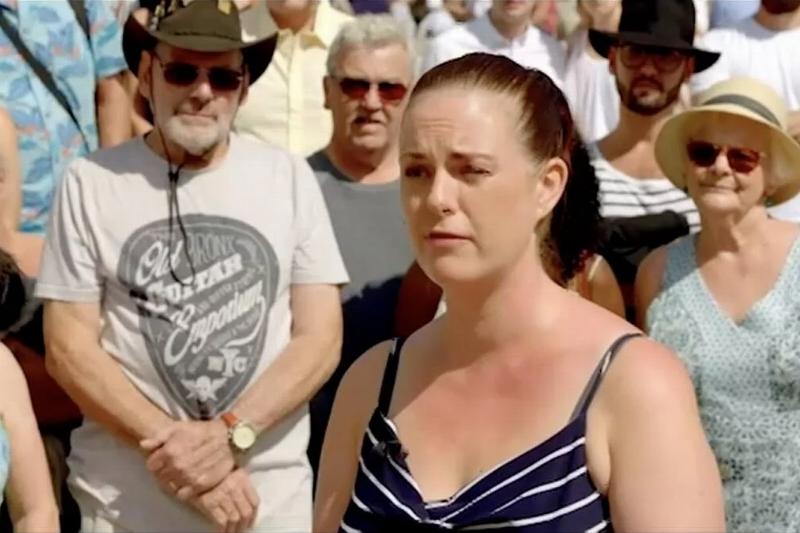
However, before Benjamin did his part to unravel the brooch's mystery, he wanted to hear more about the brooch's background. This led the woman to explain how it came into her life in the first place.
Although she didn't know how her grandmother came to possess it, she inherited it from her after it was first passed down to her father. And he had waited until a very special occasion to pass it down to her. After all, it had a traditional role to fill.
It had a special role on her big day
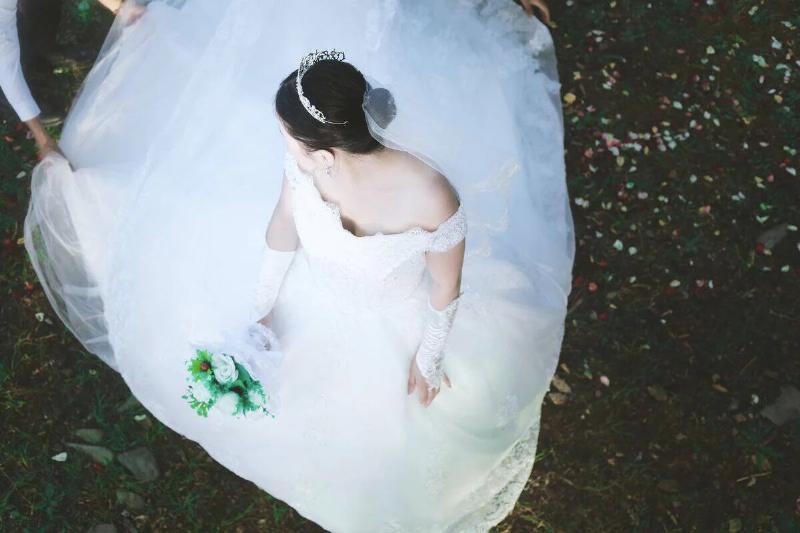
The woman explained to Benjamin that she had worn it on her wedding day. Since brides are traditionally expected to include something old, new, borrowed, and blue in their wedding ensemble, the brooch would work perfectly as something blue.
That was especially true given its personal origin to her. The brooch's sentimental value made the woman curious about the life it had before her grandmother passed it down. At last, those long-awaited answers were about to come to her.
A taste of its true value
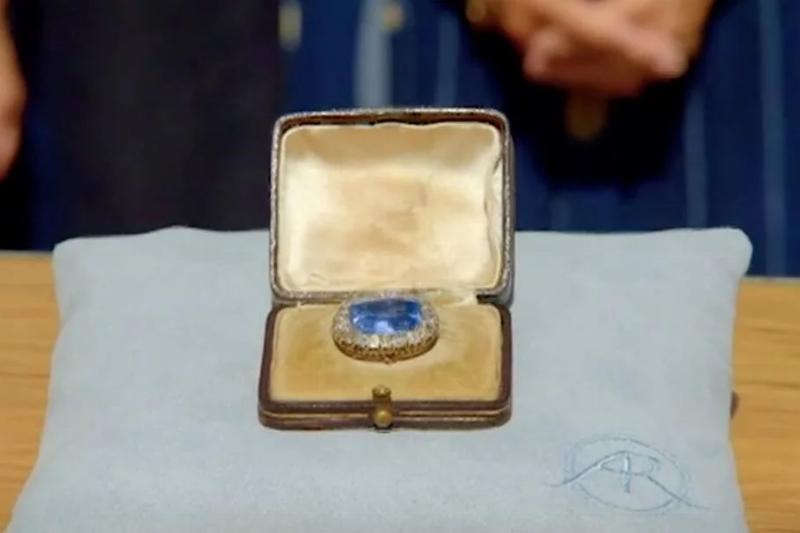
Before he got into the brooch's raw materials, Benjamin was able to identify a likely range for its origin. Although he couldn't get an exact date from a cursory glance, the brooch's characteristics suggested that it was made in the mid-to-late 19th Century.
More specifically, he estimated its age to be between 130 and 140 years old. He also described its style as "ordinary" for the period and said both the brooch at large and its stone fit the "cushion" style.
She faced constant rejection
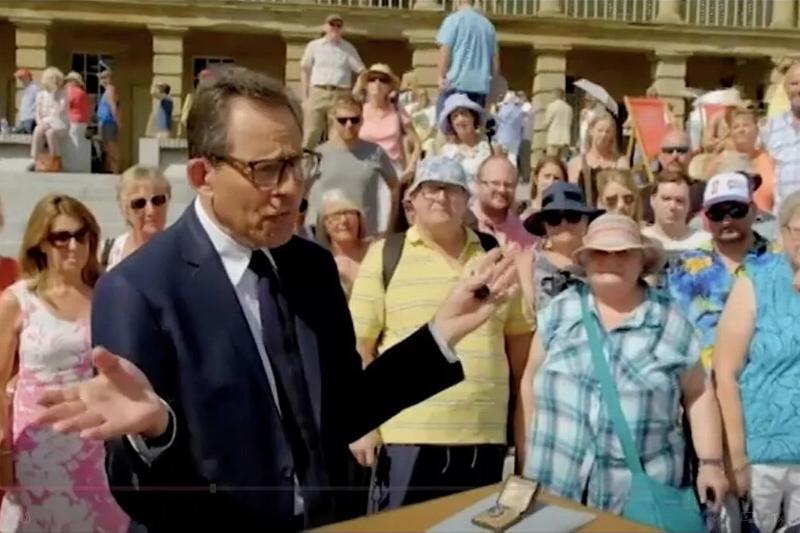
While addressing what the blue stone is really made of, Benjamin mentioned the reactions the woman had told him about from other jewelers. From the sounds of it, part of her struggle to identify its material came as a result of jewelers not caring enough to find out.
To summarize these reactions, Benjamin said, "You've been told by some jewelers, 'take it away. It's valueless.'" Indeed, the woman confirmed that they were about as dismissive as he made them sound.
They weren't nice about it either
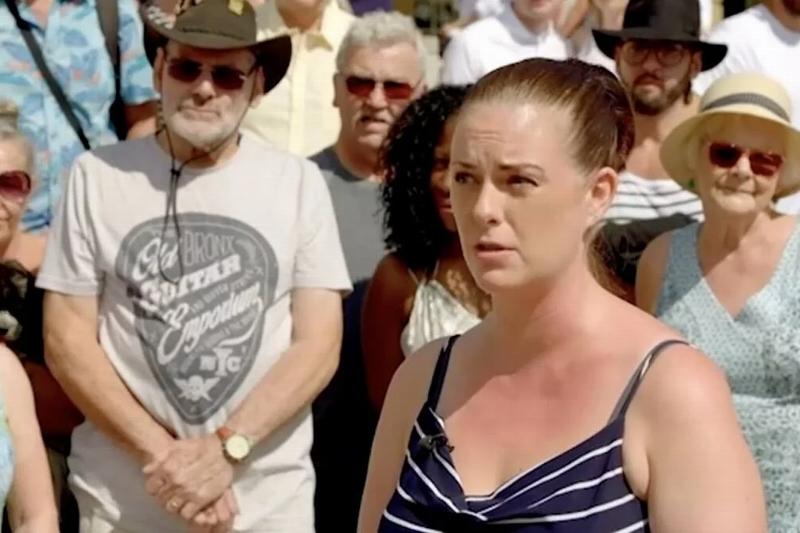
As the woman relayed, "They thought it was costume jewelry; they didn't believe us. They were quite rude to me and my husband. They just went, 'I don't know why you've brought this in to be valued.'"
Benjamin seemed surprised by this reception, and the woman shared the theories these jewelers had as to the brooch's origins once they had taken a break from insulting her. Naturally, their first impressions had quite an influence on how they analyzed the piece.
A low-quality perception
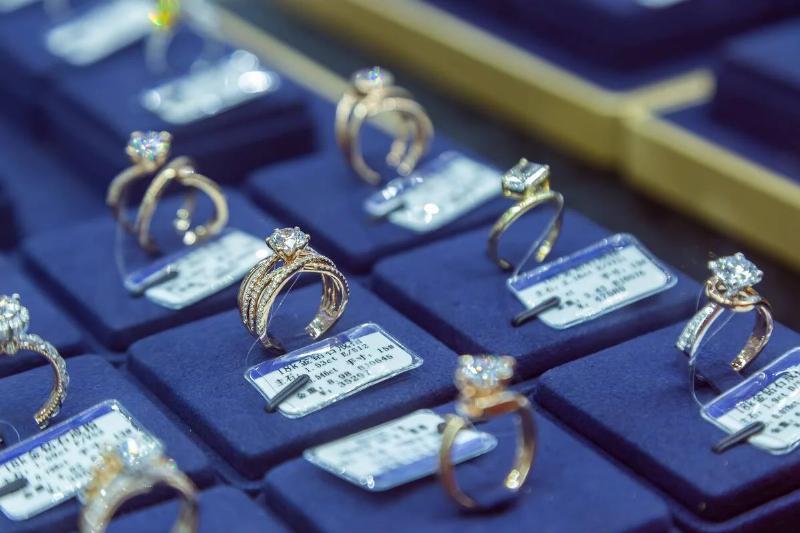
As far as the jewelers the woman had talked to were concerned, the diamonds in the brooch were not the genuine article. Other jewelers disagreed but insisted that if they were real, they were low-quality and rife with impurities. As she put it, "We've been told all sorts."
But while the woman obviously didn't appreciate their rudeness, the prevailing impression she got was that the brooch was worthless. Still, the fact that there was so much confusion around its materials spurred her to finally find out what they really were.
A brutal summary
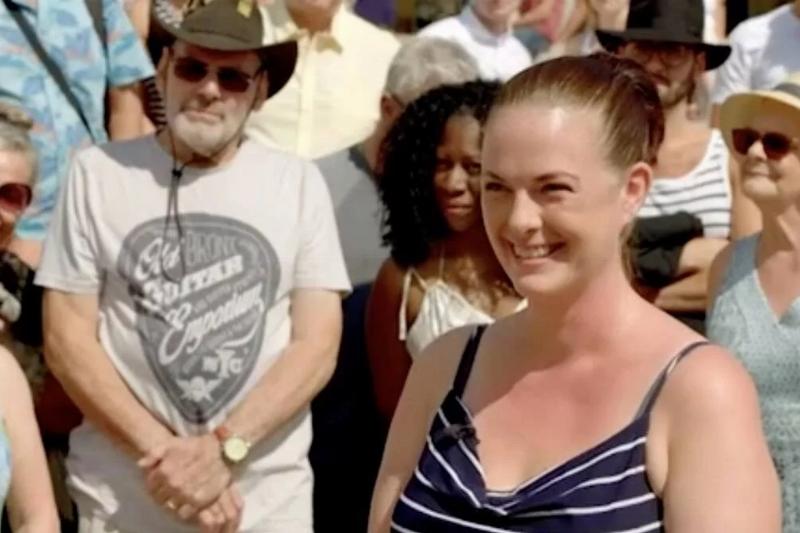
Upon hearing this, Benjamin replied, "So you've been told by a number of jewelers that it's an inconsequential piece of costume jewelry mounted up with a piece of blue glass in a surround of white paste. Worth nothing."
With a smile and a chuckle, the woman confirmed each step of Benjamin's summary, ending with a casual "pretty much" when he mentioned that it was supposedly worth nothing. But what Benjamin hadn't revealed yet was whether he agreed with this summary.
A note on the term "paste"

For those unfamiliar with the jewelry industry, the term "paste" refers to a specific type of false gemstone characteristic of costume jewelry. Although "paste" is a term commonly associated with adhesives, it carries an entirely different meaning in this particular arena.
According to Joseph Jewelry, it historically refers to glass that has been hand-cut to resemble the shape and brilliance of a diamond. However, modern paste jewelry isn't typically made from glass but lead crystals that shine bright enough to resemble the real thing.
Benjamin hints at his opinion
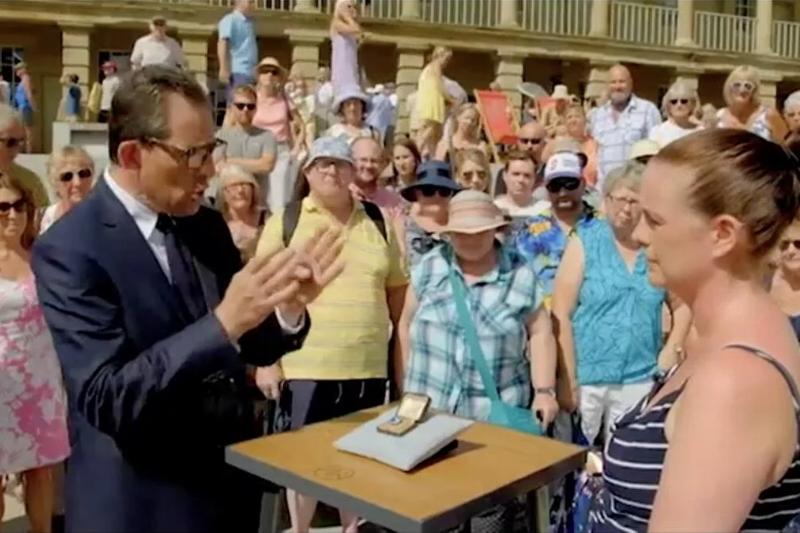
However, Benjamin immediately followed this summation by asking the woman an exciting question. In his words, "So, if I were to say that whoever these jewelers were, they were talking absolute rubbish, would you be happy to hear that?"
Naturally, the smiling woman said she would. So, he told her that they were way off base by characterizing the brooch as a piece of jewelry with no consequence at all. And before long, he would make it clear exactly how wrong the others were.
The stone is finally revealed
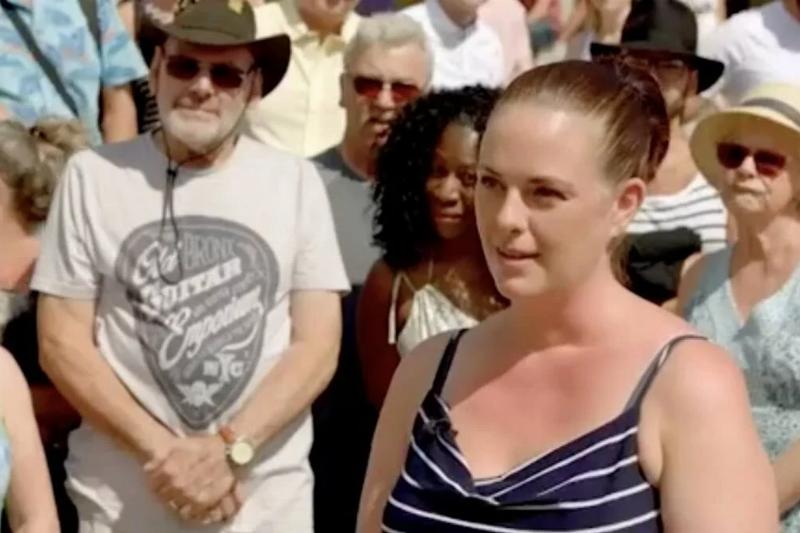
Contrary to what everyone else the woman had brought the brooch to thought, Benjamin said, it was actually a piece of "significant consequence." A major reason why he believed this had to do with the properties of the massive stone in the center.
Presumably, the other jewelers thought that the stone couldn't be anywhere near as large as it is if it was precious. But Benjamin revealed that it is nonetheless an "absolutely enormous sapphire." Naturally, the woman was stunned and only managed a soft "wow" at this information.
An unusually large stone
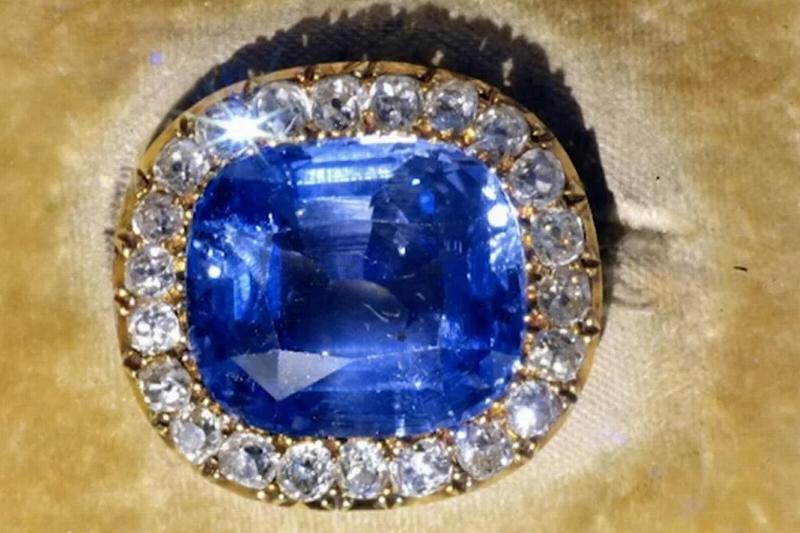
Benjamin further described it as a cushion sapphire and told her to take in its size for a moment. And indeed, that was almost certainly what threw off the other jewelers. He explained that sapphire rings usually feature a much smaller stone.
When he described it as a small stone that goes on the finger, the woman showed her engagement ring. Based on her mumbled description of it, she was still stunned by the revelation, but he confirmed that her ring was a perfect example of what he was talking about.
A big stone means big money
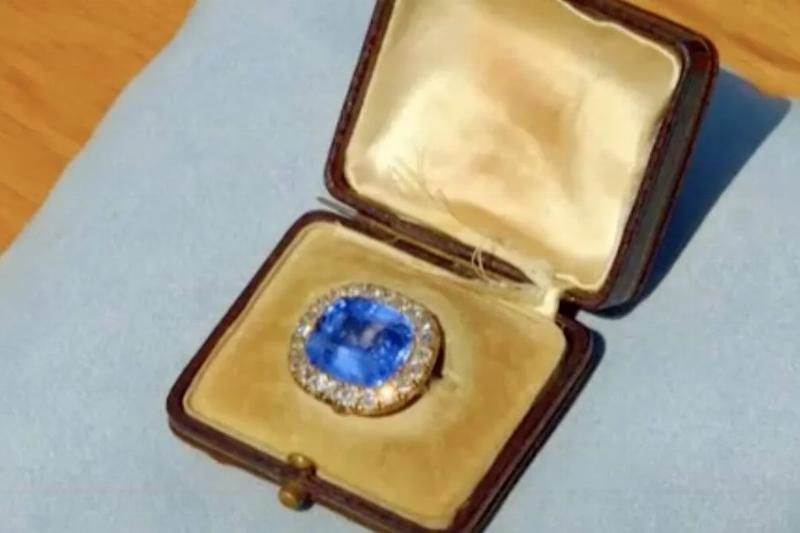
Benjamin added that before he and the woman discussed her brooch in detail, he had calculated the sapphire's approximate weight by its size. And the estimate he came up with ranged between 25 and 30 carats.
Although the woman's shocked reaction showed that she was aware of how large that was, Benjamin clarified it for the crowd around them. In his words, "In the world of gemstones, that's quite big, actually."
She was speechless

Since Benjamin proved an engaging speaker as he gave the woman a rundown of what she really had, she chuckled along with the crowd at various points and maintained her smile. However, the shock of his revelation was abundantly clear.
After he revealed that the stone in her brooch was a sapphire, she said less and less over the course of his explanation. After all, the more he said, the clearer it was that she had something truly rare on her hands.
Time and place

After establishing that the brooch was made during the 1800s, Benjamin added that it was originally made in Ceylon. For those unaware, this was the name given to Sri Lanka during British colonialism. According to the BBC, the name change took place in 1972.
However, it wasn't until 2011 that certain state institutions were renamed to reflect the nation's independence. Obviously, the region would still have been called Ceylon when the brooch was made during the height of the British Empire.
How did he know?
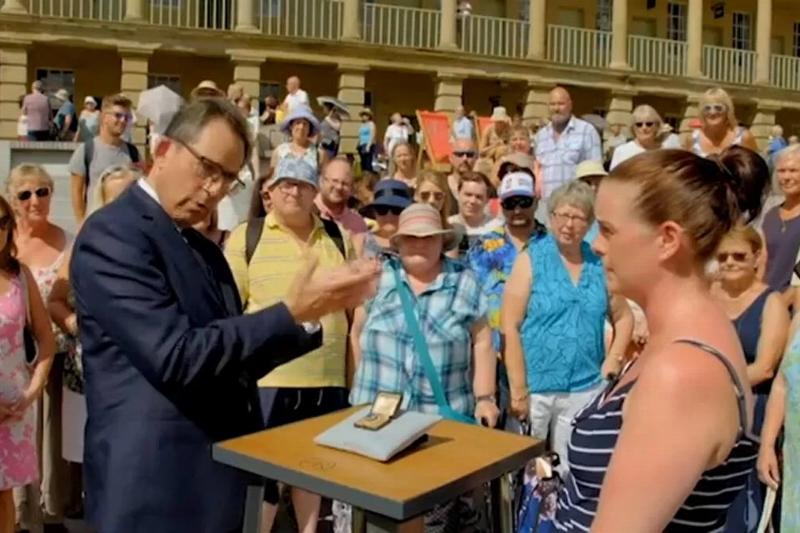
Although the style of the brooch informed Benjamin's estimate of the "big blue blob's" likely time period, the stone itself was what tipped him off to its country of origin. That's because there's a recognizable pattern in Sri Lanka's naturally occurring gemstones.
Specifically, he identified the nation's sapphires as typically appearing with a notably bright cornflower blue color. Since that would definitely describe the large stone in the brooch, it's reasonable to conclude that it's a genuine Sri Lankan sapphire.
On to the other stones
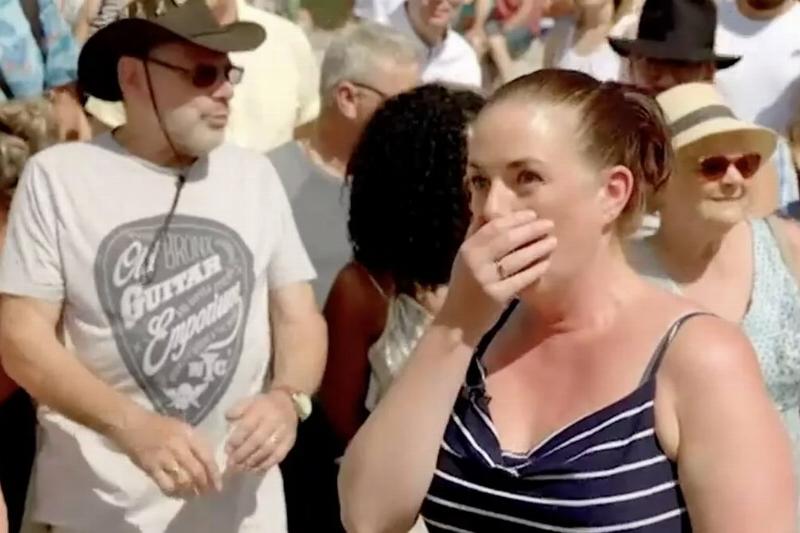
With the properties of the largest stone having been established, Benjamin then turned his attention to the white stones surrounding it. And it was clear he wasn't impressed with other jewelers' assessments of those either. That's because they were also much more valuable than they apparently seemed.
Benjamin said, "The white stones that you were told blithely by a jeweler — don't know who he was — that these were, you, know, paste. They're diamonds." It turned out they were the genuine article all along.
At last, vindication
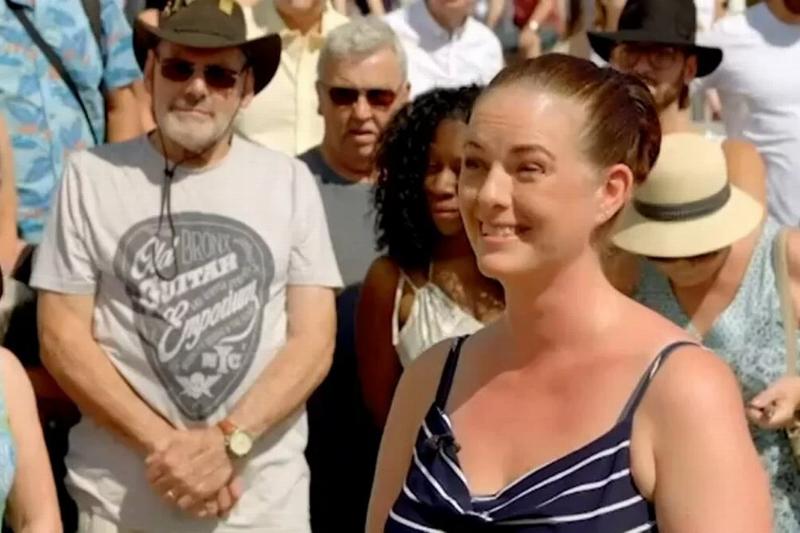
After facing so many dismissive and often rude attitudes about her brooch from other jewelers, this was clearly music to the woman's ears. While they wondered why she bothered bringing it to them, Benjamin wondered what those jewelers could have possibly been seeing.
After all, not only was the giant sapphire that defined the "big blue blob" about as far from costume jewelry as it gets, but they weren't able to recognize the veracity of the ring of diamonds around it. Naturally, these facts brought a satisfied smile to her face.
The rest of the brooch is appropriately fancy

Although the stone and the surrounding diamonds certainly did their parts to ensure this brooch was far from worthless, that wasn't all that Benjamin was taking into consideration to determine its value. After all, someone who went to all this trouble wouldn't skimp on the rest of the brooch.
And indeed, they didn't. Benjamin noted that the stones were mounted in gold, which can be seen peeking around the diamonds. He also mentioned that it was set in silver, which makes essentially every piece of the brooch valuable.
Even the little details mattered
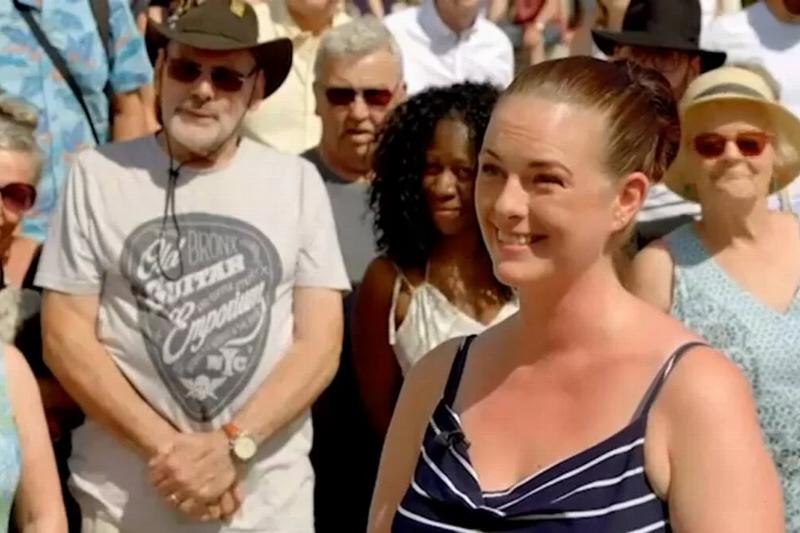
However, even these considerations weren't enough for Benjamin to call it a day, which speaks to how thorough the experts are on Antiques Roadshow. After all, Benjamin also noted that the woman even brought the brooch in its original fitted box.
With even these little details accounted for, the brooch essentially went from being a home run in terms of its value to a grand slam. Benjamin ultimately concluded that the brooch is "an absolute screamer."
But how much is it worth?
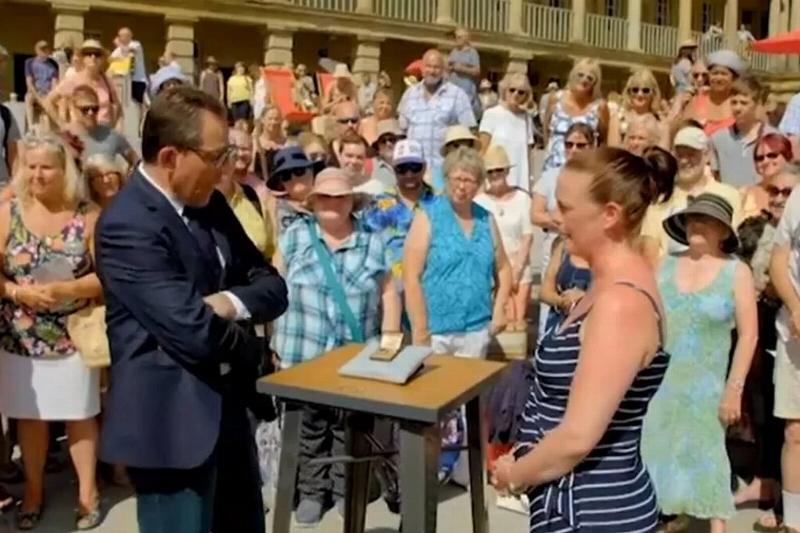
Naturally, the woman was delighted and amazed to hear that her brooch was not only far more real than she was told but an amazing find, even among other valuable pieces. She could only softly say, "That's amazing," after Benjamin broke down all the ways that made it so uniquely valuable.
Of course, that then begs the question of how valuable he actually thought it was. It's patently obvious to him that the "big blue blob" is worth something, but Antique Roadshow typically involves more specific valuations than that.
That's surprisingly hard to answer

As previously established, Benjamin has decades of experience under his belt. Indeed, long-time viewers of Antiques Roadshow would already be well aware of this because he had lent his experience and expertise to the show for 28 years by that point.
However, this brooch was so special, even for someone who has confidently estimated valuations throughout that time, that it was hard to come to an answer. And there was one simple fact that was complicating things for the expert.
He had to admit he was humbled

Benjamin had to admit that the woman's brooch was a first even in his long, distinguished career. And the reason had a lot to do with why so many people had called it the "big blue blob" in the first place. It turns out that was an understatement.
When Benjamin described the sapphire as enormous, that didn't quite explain the extent of its staggering size. That's because he told the woman that this was legitimately the largest sapphire he had ever seen brought onto the Antique Roadshow.
That may have been the woman's problem
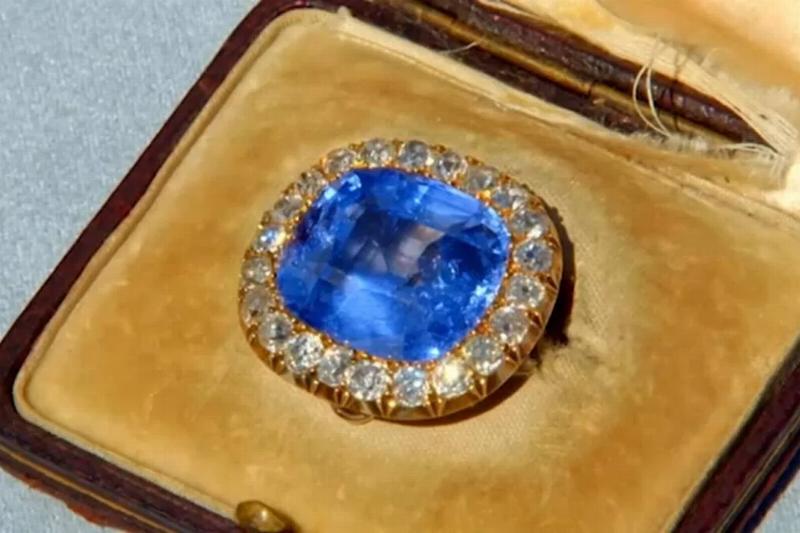
Considering the gulf between Benjamin's opinion and those of the other jewelers the woman visited, it may be tempting to put their reactions down to sheer snobbery. And considering how rude they reportedly were, it's hard to imagine that not entering into it at least a little.
However, if even someone with Benjamin's experience had never seen a sapphire that big, it's probably reasonable to assume that most, if not all, of them hadn't either. Perhaps that was the major reason why the woman found it so hard to get a straight answer.
They literally couldn't believe it
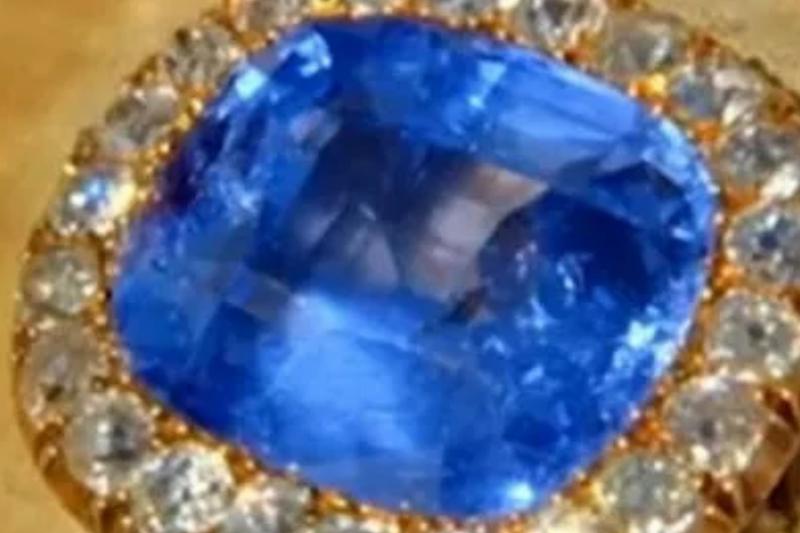
There's a chance that when she came in with the brooch, the sapphire at its center seemed so comically large to them that there was no way it could possibly be real. Benjamin kept saying he had no idea who these jewelers could have been, which implied that their expertise must be pretty shaky not to recognize the brooch's stones.
But perhaps that size prevented them from even wanting to give it the thorough examination Benjamin did. Since they thought it was too large to be a proper sapphire, it likely didn't take them long to write it off as glass without seriously looking at it.
This attitude prevailed for the whole piece

Moreover, if those jewelers were already too suspicious of the woman and her husband to recognize any of the clear signs that she had a real sapphire on her hands, those suspicions likely bled into other aspects of the brooch as well.
In other words, Benjamin was similarly baffled that they misidentified the diamonds in the brooch as pastes. However, it would be hard not to come to that opinion if they already disbelieved the sapphire's authenticity. After all, even the ones who did recognize them as diamonds thought they "must" be of low quality.
That explains the rudeness too

Naturally, a jeweler can't expect to get much business if they dismissively and rudely turn away every customer who brings them a potentially valuable item. And while just one jeweler could leave a bad taste in anyone's mouth, it was puzzling for everyone she visited to react in similar ways.
However, their reactions make far more sense if they were convinced the woman had brought them a forged piece. Indeed, how politely do most people react to being scammed? They were confident they were right, but that simply turned out to be overconfidence.
At long last, a number: $50,000 to $63,000
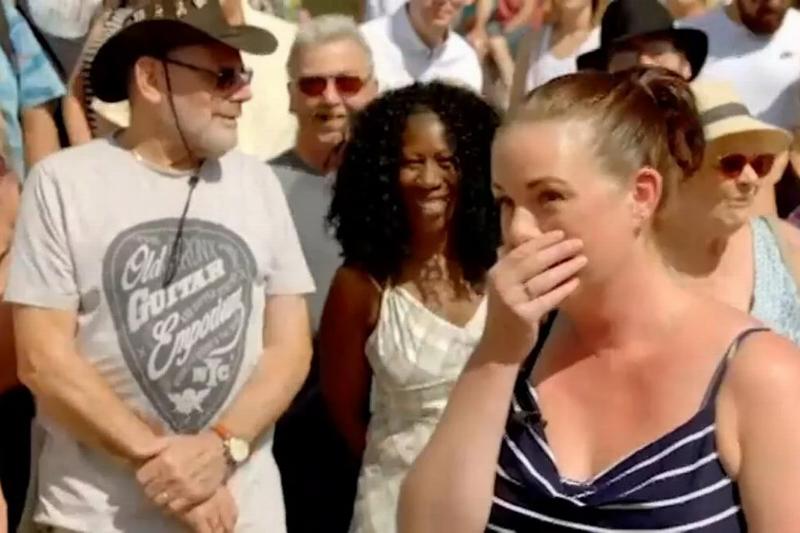
Although Benjamin had to work around the fact that he hadn't dealt with a sapphire as large as the one on the woman's brooch, he was still able to come through with an estimate. And this was based on what he would expect to see people bid if he were to auction off the brooch.
If that were to happen, Benjamin said he would expect the "big blue blob" to fetch between £40,000 and £50,000. For reference, an equivalent range in American dollars would be from $50,000 to $63,000.
The woman was beside herself
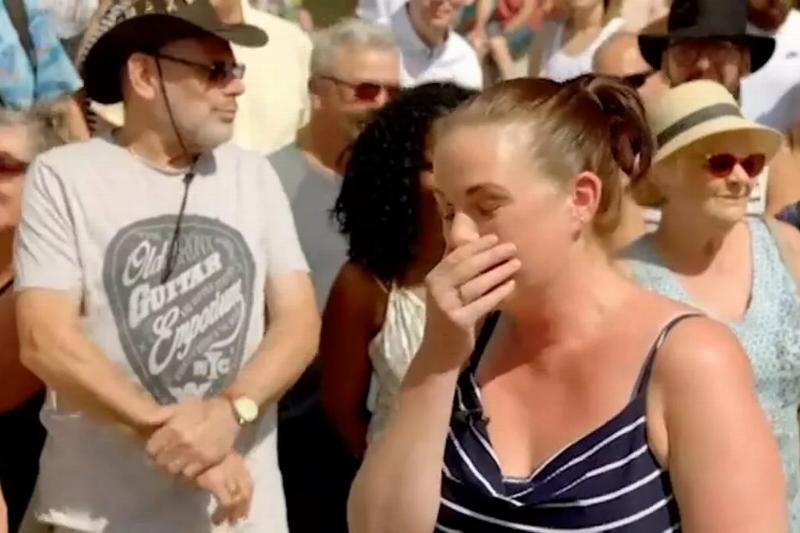
Although it was clear the woman had been deeply surprised by each of the revelations Benjamin had for her, this was the most overwhelming shock of them all. The vindication was obviously important, but even she hadn't expected her "big blue blob" to be worth that much.
Understandably, it's very overwhelming to go from thinking a brooch is worthless to learning that it's worth more than many people's annual salaries. So, she was left utterly speechless for a few moments.
A moment to compose herself
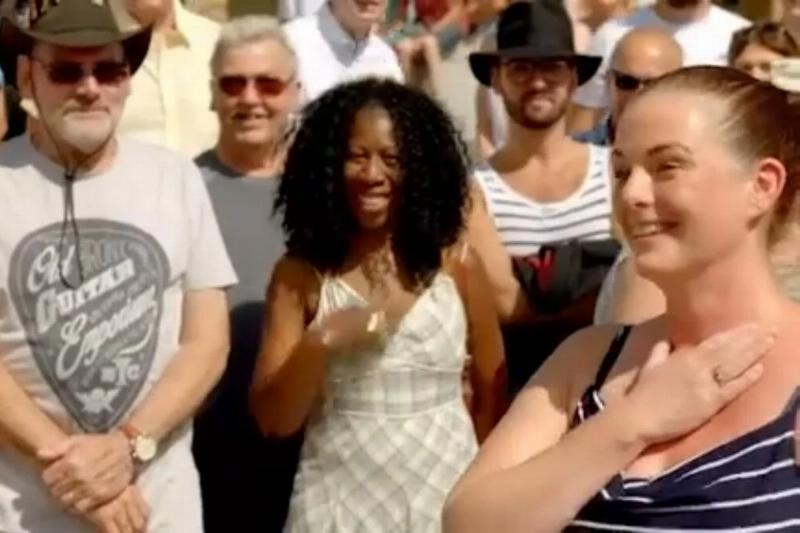
After she took a moment to process what she had just heard, the woman's happiness at this stunning news was palpable. She was choked up and smiling broadly all at once after burying her face in her hand. Of course, she was also speechless.
As the crowd around her and Benjamin applauded, she laughed nervously. Finally, she was able to manage an overwhelmed, "Oh my word," her voice heavy with emotion. Those jewelers may not have been on her side, but the crowd was.
A flustered aftermath
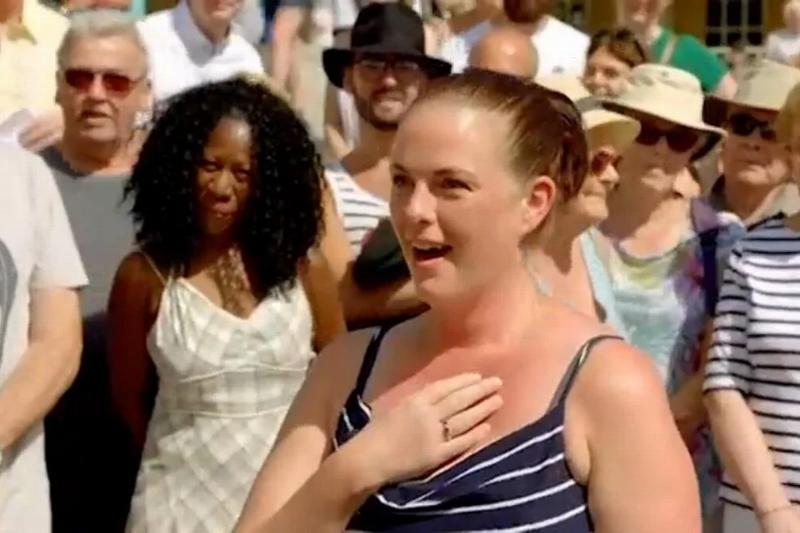
Even after this initial shock, it seemed hard for the woman to catch her breath in light of her brooch's overwhelming value. Although one can attach multiple generations of sentimental value to anything, it must have hurt to see so many people dismiss her family's heirloom as worthless.
So, as the audience looked on happily, she laughed a few times to herself in apparent disbelief. After another moment, she revealed part of the reason she was so speechless. As she said, "I don't want to swear."
Permission granted

Considering how overwhelmed she was, Benjamin's first question after revealing how much she could get for her brooch was to ask if she was all right. Once he heard what she said, though, it seemed like a pretty adorable concern to him.
So when she told him this, he happily threw his arms out to the side and just said, "Swear!" Yet since the British version of Antiques Roadshow is broadcast on the BBC, it's worth considering how the network would actually treat that.
How the BBC treats swearing

As is generally the case with public broadcasters, the BBC's editorial guidelines do not allow strong language during hours when children are likely to be watching and limit the frequency of that language even when it is allowed. There are exceptions that depend on the context for this, but the frequency rule still applies.
Although the BBC doesn't bleep strong language that's integral to the content, they obscure any non-essential cursing by bleeping out the spoken word and blurring the lips to ensure it's not obvious what was said. Given that Antiques Roadshow could be expected to broadcast during the day, this is likely the strategy they would use.
A wholesome response
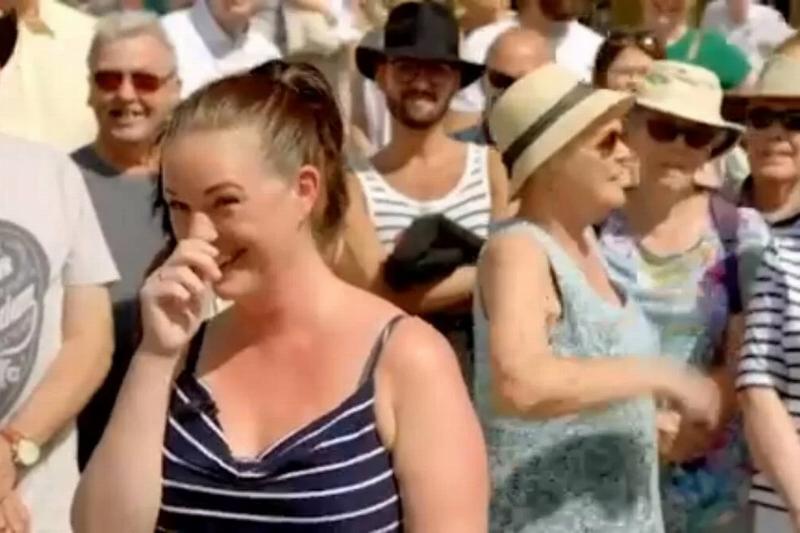
However, it didn't turn out that any of the BBC's editors would need to make the call to bleep out what she said, as Benjamin likely expected them to. Although the woman smiled at his encouragement, she remained silent for a moment.
And even when she did speak, it was clear she wasn't comfortable with swearing on camera. That's because all she could manage to say while she giggled was, "Blooming heck." It's not exactly something anyone needs to bleep out.
They were both impressed
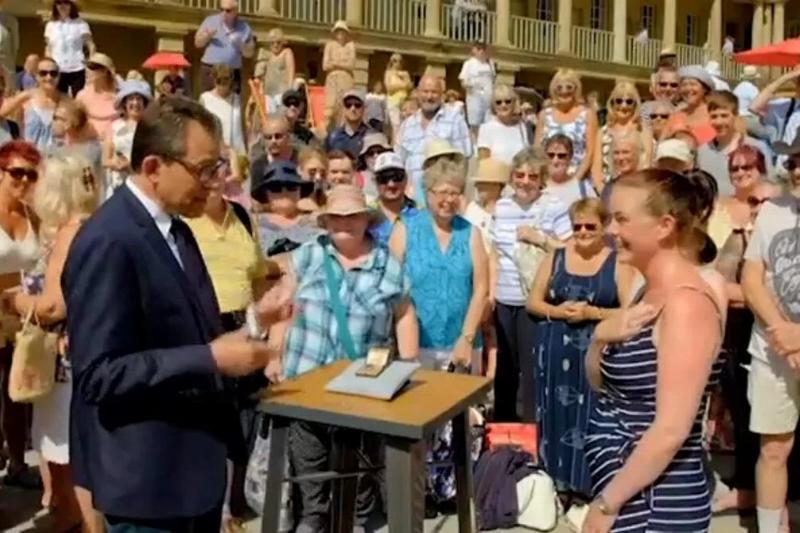
Amused and heart-warmed by her response, Benjamin said, "Blooming heck, indeed. It's an absolute beauty. I mean, you know, what else can I say about it? It's fabulous!" From the sounds of it, those words couldn't differ more from what the woman had heard before if Benjamin tried.
And so, when all that there was to say had been said, both Benjamin and the woman had sincere words of thanks for each other. After all, both now feel richer for having met each other.
A mutual appreciation
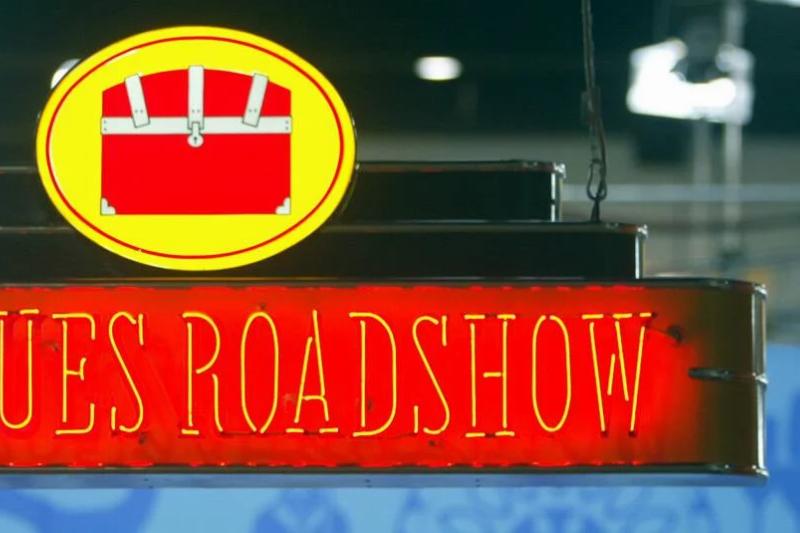
From the woman's perspective, a genuine expert in this realm not only took her more seriously from the onset than any jeweler she had seen but also finally confirmed what she had. That would have at least offered closure if it was as worthless as they said, but it was life-changing to learn that it wasn't.
From Benjamin's perspective, the woman showed him a piece that was too amazing to forget. And in the process, she put him face to face with the largest sapphire he had ever encountered.
The value of a second opinion
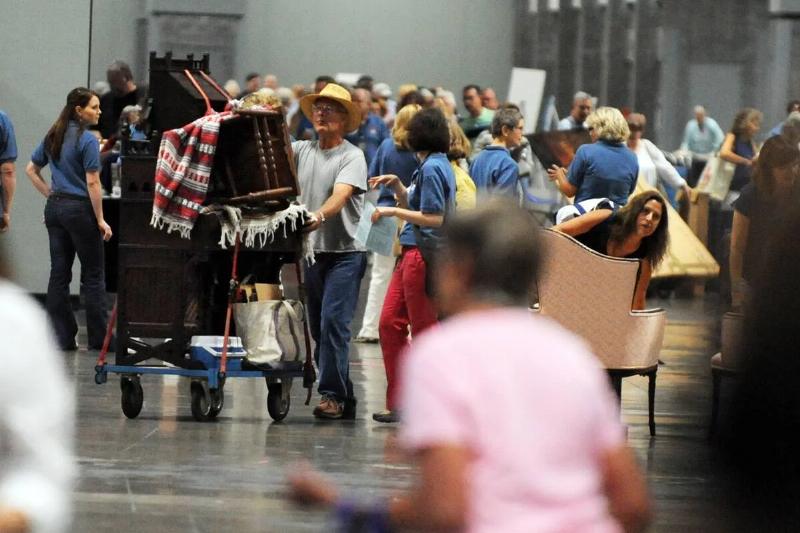
Although Antiques Roadshow often makes people more interested in seeing whether the old items lying around in their house are worth anything, this story serves as a lesson in how valuable a second opinion can be. After all, no matter how much pride someone takes in their profession, they're still human and, thus, are subject to their own biases.
While that's obviously true of everyone, biases differ from person to person. Determining the truth often involves figuring out how the biases between different sources align. And that's why it may take a third, fourth, or even tenth opinion before that truth is finally discovered.









